Do you know what these 8 badges mean?
Sitting in traffic can be boring. There often isn’t much to look at. A few personalized license plates to decode, or maybe a pretty sunrise or sunset to soak in, at best. I find myself often trying figure out what the badges on the back of the cars in front me you mean.
While the badging on modern cars is largely meaningless, there was a time when automakers peppered alphanumerics all over a car’s doors, fenders, pillars, and bumpers. It was a form boasting that showcased the car’s technological advancements and performance to anyone looking.
Those signals could be quite complex. You might need a decoder book, an engineering background, and an MBA to make sense of these four- or five-letter jumbles. These acronyms and initialisms pertained to the car’s transmission, engine, all-wheel drive system, or maybe a modest option code that sounded more like a radio station you’d pick up in the far corners of Kansas.
Thanks for tuning in to 94.3 SH-AWD! Up next we have a brand-new track off Sting’s new album!
We put our heads together and came up with a selection of badges—some well-known, some more obscure—and hunted down what each one meant. Should you stumble across one of these examples while gridlocked, the list below should provide you with some neat trivia to impress (or bore) your passengers.
LTD

While cars can sometimes seem like a Life Time Decision, that is not what LTD stands for. Nor does it stand for Love, Togetherness, and Devotion, but we could all benefit from being Back in Love Again with a quality automotive emblem like the Ford LTD.
No matter, when trim packages were introduced, the labels needed to create a hierarchy, clearly outlining which models were the feature-packed examples. Ford thought the best way to do so would be to make plain that one particular trim was Limited, which shortened nicely to LTD on the 1965 Ford Galaxie. Apparently it worked; by the late 1970s the Galaxie moniker was gone, and the LTD became the King of Dearborn.
RS/SS
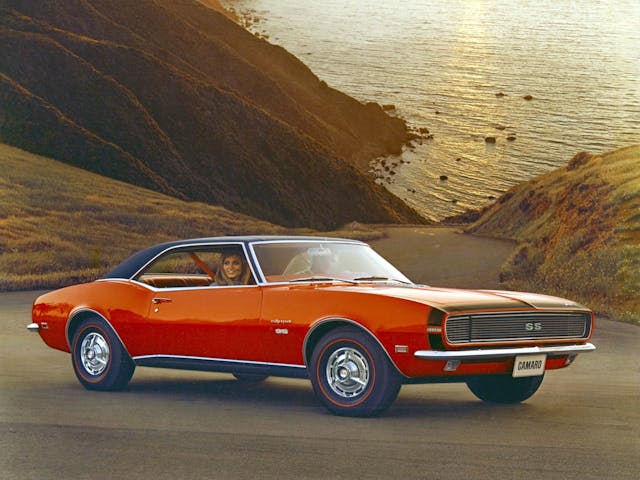
Just as Ford wanted to distinguish one trim as “Limited,” Chevrolet sought slice up the Camaro lineup in the late 1960s. Buyers could step up from the base trim to the RS, which stood for Rally Sport. Making the leap scored you hidden headlights, revised taillights, and some additional brightwork. From there, you could step up to the SS package, which was short for Super Sport and was targeted at buyers wanting additional power and handling capability.
4WS
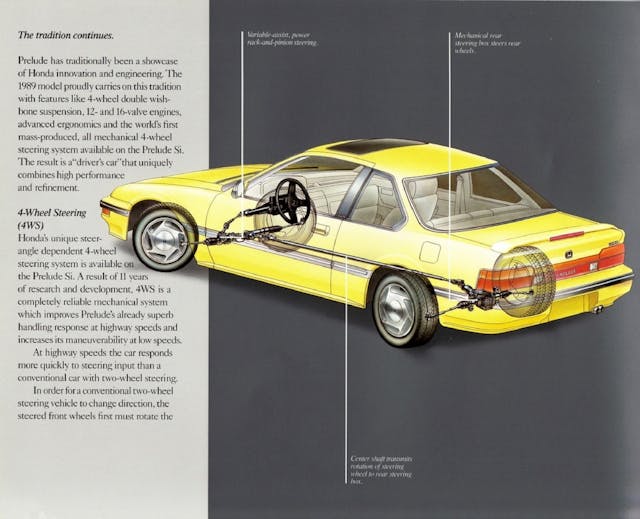
When numbers enter into the mix, you know things are getting complicated. Four Window System? The emblem was mounted on the B-pillar, after all!
But wait, that doesn’t make sense because this bit of tech debuted on the two-door Honda Prelude coupe. It’s actually a shorthand for Honda’s four-wheel steering, first introduced on the Prelude for the 1987 model year. The entirely mechanical system dialed in a relatively small amount of counter-steering to the rear wheels at slow speed to improve the turning circle, and it could also angle the rear wheels in the same direction as the fronts at higher speeds for better stability.
OHC/FI
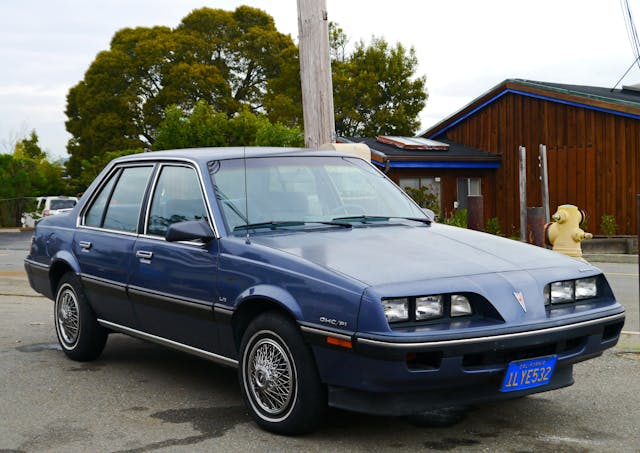
Five letters with a slash. Things are getting serious now! Or at least, Pontiac thought its tech was getting noteworthy with the combination of an overhead camshaft and fuel injection on the 1.8-liter fuel injected engines found in the J-body based Pontiac Sunbird. (This Opel-derived motor was also used in the Oldsmobile Firenza and Buick Skyhawk, but without Pontiac’s unique emblem.) Did many/most vehicles of the era feature at least one overhead camshaft and fuel injection? Well, sure. But were they advertising it on the front of the fender? Gotta respect Pontiac’s hustle.
SVT

Super Very Torque? I mean, you do only see this badge on quick cars. Born in 1991, Ford’s Special Vehicle Team (SVT) was a skunkworks division dedicated to niche high-performance vehicles. While not particularly a creative initialism, the team was responsible for some heavy-hitting machinery including the 1993 Mustang Cobra R, 2005–2006 Ford GT supercar, and the first Ford Raptor pickup. Ford formally closed down SVT in 2015, but the legacy of this badge will be remembered fondly in the hearts of Blue Oval fans everywhere.
ALB

Another Honda entry to the list, like the 4WS emblem, also appears on the B-pillar. While ALB sounds like a minor-league baseball organization, it’s not (we think). On Hondas, ALB was just a simple abbreviation for anti-lock brakes that predated the commonly used ABS (anti-lock braking system). Of course, ABS is ubiquitous and thus nothing to brag about, but ALB marks a time when it was something to be proud of.
HICAS and Super HICAS
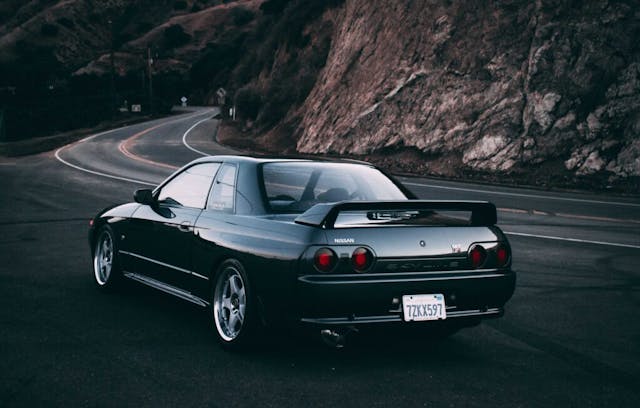
Whoa, that’s a lot of letters! HICAS stood for High Capacity Actively Controlled Steering, a rear-wheel steering system that Nissan first introduced on the 1986 Skyline GTS coupe. The system utilized the power steering pump to push fluid through a hydraulic circuit that would adjust the angle of the rear rollers based on input data from speed sensors. Starting with the R33 (1993–97) Skyline, the system swapped out the hydraulic controls for an electronically actuated system, which Nissan subsequently dubbed Super HICAS.
XR4ti

Where do we even start here? It is often safe to assume that ‘X’ is representative of ‘experimental’ in the land of European Ford and 1960s Lincoln-Mercury products—just pay no attention to the fact that Nissan came out with the Xterra and BMW stepped in with X-branded crossovers to muddied everything up. This particular string of letters does indeed start with ‘experimental,’ though it was only truly experimental for the North American market. From 1985 to 1989, Ford imported the three-door Sierra XR4i model and labeled it a Merkur XR4ti.
Long story short, XR4ti stood for Experimental (X) Racing (R),four cylinders** (4), Turbocharging (t), and fuel injection (i). That makes for a pretty cool package, but when shortened it looks more like a letter salad. Bob Lutz probably coulda been a little clearer with this one. That said, the 4 originally meant that it was the high performance version of the Ford Sierra, which was called the XR4.
You might be more likely to see these particular emblems at a RadWood event than in an everyday traffic jam, but knowledge is power nonetheless. We do occasionally have to eat and sleep, so we admit that what we’ve discussed here is a fraction of what is out there in wild, waiting to be decoded. Help us expand the list with a comment below and share your knowledge!
**There’s some intentional confusion here, as the “XR4” in XR4ti was originally designated as the largest of the three experimental racing creations from Ford of Europe. There was the smaller Escort XR3 and Fiesta XR2 before it. So you can either refer to it as four cylinders in American parlance, as it makes complete sense with the “t” and the “i” after, or the original definition of it being a larger hatchback in Ford’s performance portfolio.
***
Check out the Hagerty Media homepage so you don’t miss a single story, or better yet, bookmark it. To get our best stories delivered right to your inbox, subscribe to our newsletters.
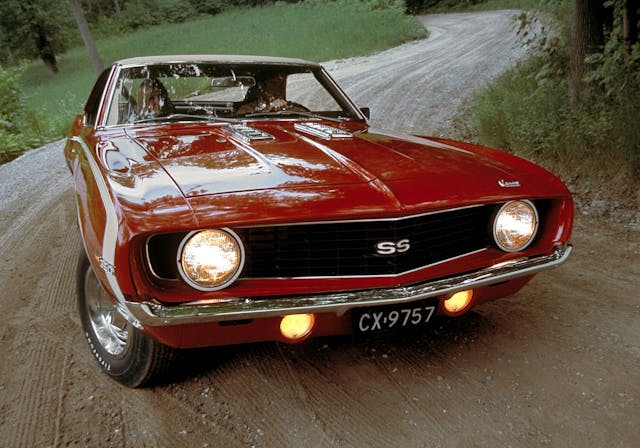
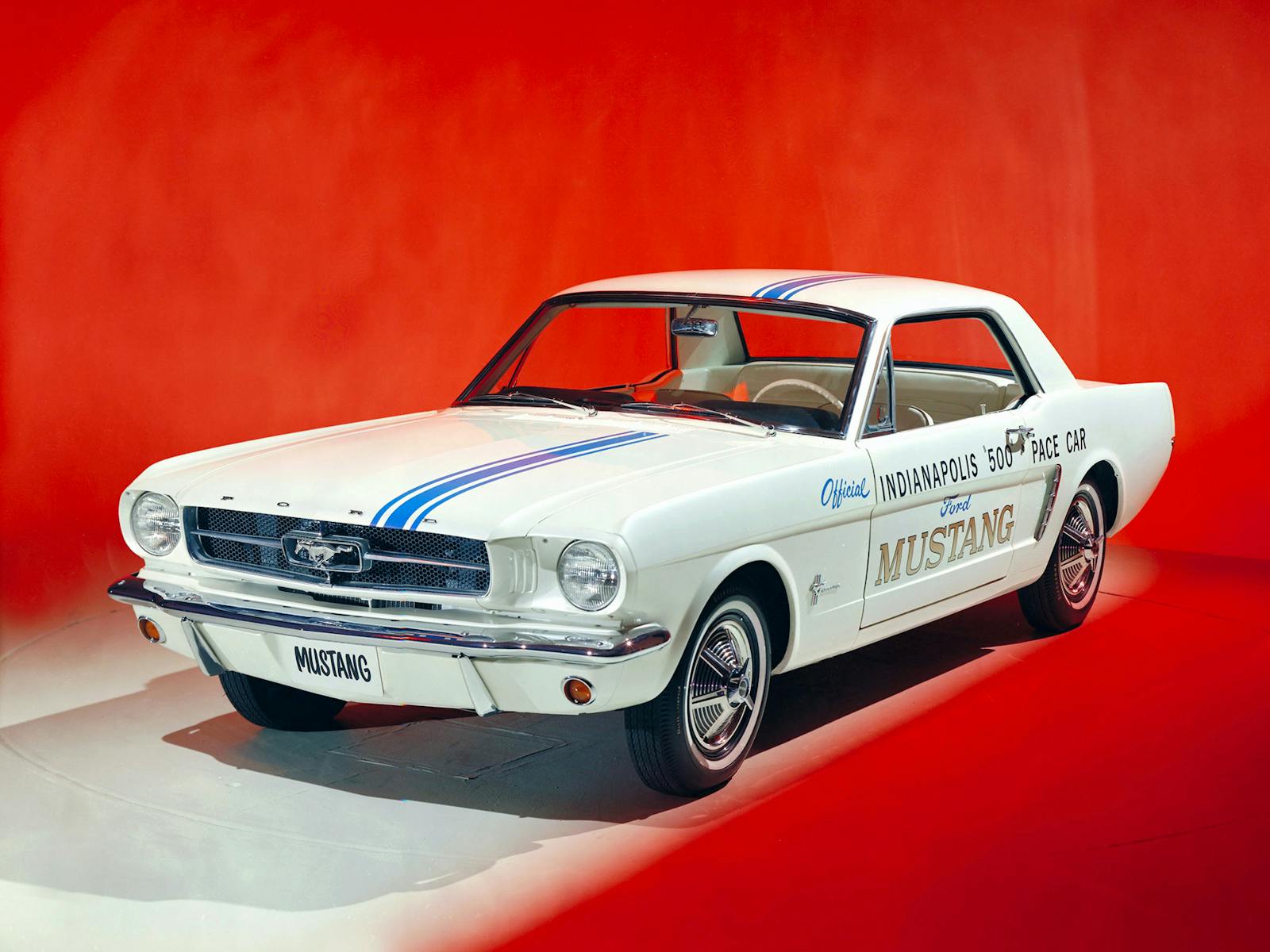
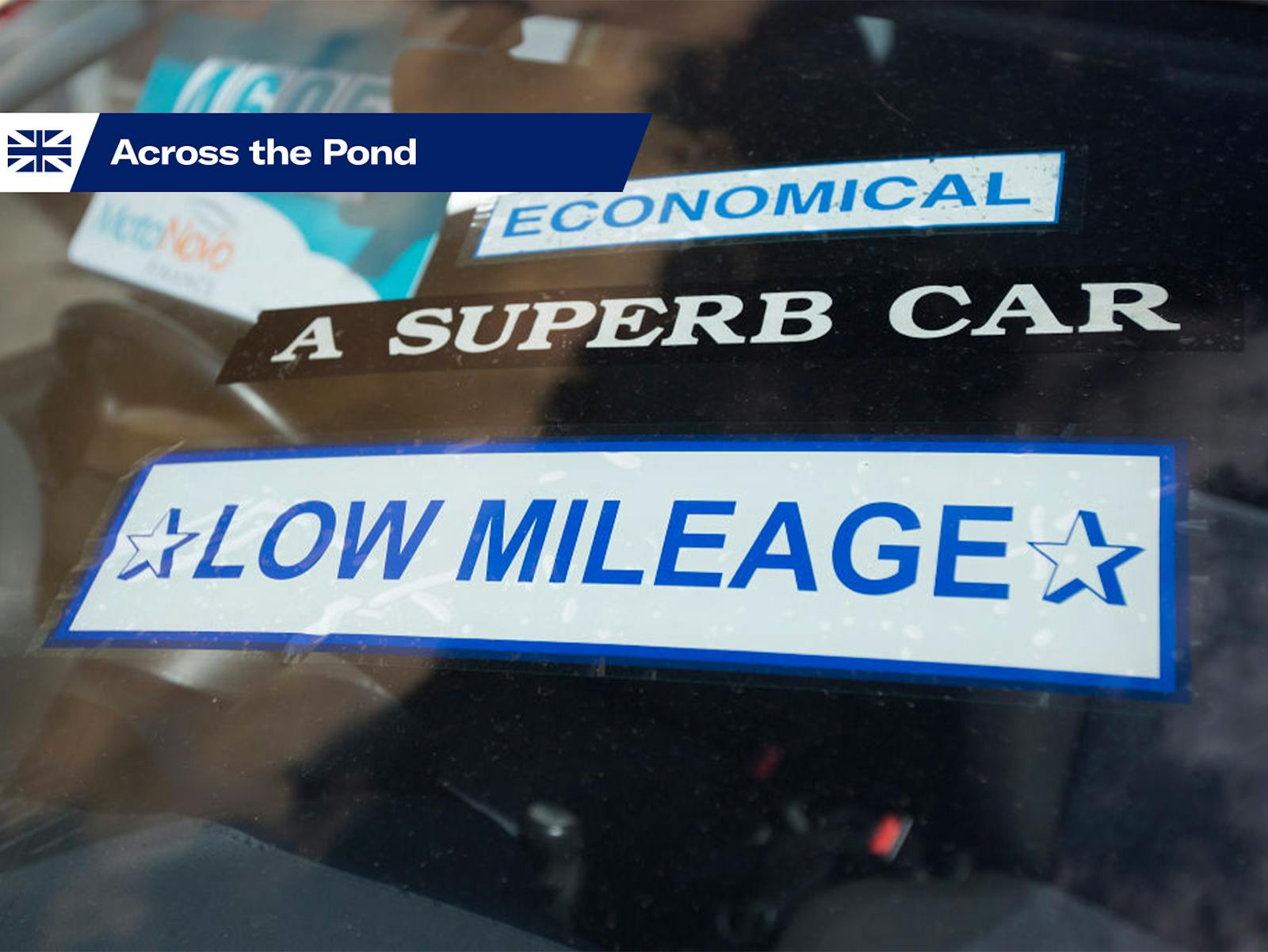
What about the Plymouth VIP? It stands for Very Important Plymouth.
HUA. Refers to driver operating system; Head Up Ass
In the late 80’s/early 90’s I was working at Chrysler Highland Park in engine controls. At that time a team was formed to write code for the first anti-lock brake controller. It was quite a job and the code space was larger than the 8-bit engine control code at the time! One of the lead engineers would often refer to the project as “Anti-Stop Brakes.”
There is just one correction for the 4WS Honda. Since it WAS completely mechanical, with a steering shaft running all the way to the back and a secondary gearbox, it was never dependent on speed, but steering angle. When you’d start to turn the wheel, it turned the rear wheels the same direction, which worked nicely for changing lanes. When you turned the wheel further, the gearbox turned the rear wheels back and then the opposite direction, when it was useful for parking, especially parallel! You obviously wouldn’t turn it tight on the freeway, so it worked out well. It just took some getting used to in normal driving, since when you turned it, it would dog-walk a bit by design. I loved how it worked, but since I was never a fan of FWD, I didn’t seek out any of those Preludes. But a kick to drive!
I do believe there was a Nissan Z-car around the same time that had a form of 4WS, but was subtle, and may have been speed-dependent.
As a kid, I thought it odd in 1958 when Buick’s top-of-the line was the “Limited.” Why would anyone call their biggest model, with all the bells and whistles, “limited”? You would think it would call it “unlimited.” I suppose, like “LTD,” it is short for “Limited Production,” which supposedly suggests exclusivity. The term still irritates me: no way am I paying top dollar for a car that is “limited.” That would be more like a ’58 Chevy Del-Ray with a stovebolt and three-on-the tree.
BooHoo. All I have is DX. Which probably has no meaning except no aids, no nannies.
Then there’s the Fiat numbering system… I never did figure that out through roughly 500,000 miles to mull it over. At least Volvo model numbers were logical!
I’m surprised nobody has mentioned the Pontiac Gooly. (6000LE)
One up on the Luxury Edition, I had a couple of 6000STE versions, Special Touring Edition, which at the time was pretty Special.
Since I have a 1971 LTD Convertible. The best one I heard for LTD was someone called my car a La-Tee-Da. Which pretty much covers how I feel when I put the top down and go joy riding like people used to do in the ’70’s.
Since it was mentioned in the article, but not explained: if you’re listening to SH-AWD, you’re in a Honda product with Super Handling-All Wheel Drive (I believe it’s all Acuras). It spawned from the ATTS (Active Torque Transfer System) in Preludes.
I was told FIAT meant “ Fix it again Tony”.
And let us not forget FUBAR = F— up beyond all recognition my personal favorite.
People used to say Ford stood for “Fix Or Repair Daily.
Or, “found on the road dead” but for Ford aficionados, “First On Race Day.”
A couple other acronyms: Fiat: Fix it again, Tony; Everitt-Metzger-Flanders: Every Morning Fixit
gmc stands General Mistakes Corp.
I always have thought is was kinda amusing that Toyota brands its performance vehicles as “Toyota Racing Development” using the sticker TRD…apparently whomever thought that up didn’t consider the acronym in English.
And to an older generation, “SS” had a completely different meaning. The company that became Jaguar began in the 30s as the “Standard Swallow Car Company” (SS Cars) and the original Jaguar was the classic SS100 Jaguar sports car introduced in 1936. By the end of WW II, the company quietly dropped the SS and became Jaguar.
442 is 400 ci, 4 bbl, dual exhaust. With reference to the SS, I have seen an original 63 Impala SS with a 6 cyl. and that was back in 1964.
“Cherie, why didn’t you buy that car? I thought you liked it.”
“It’s bad enough that my underwear has ‘XL’ on it. I’m not going to have that on my car too.”